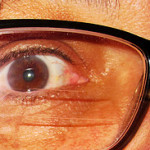Energized by a full day face to face kick-off in late September, the Houston cohort of the Connected Learner Experience joined the walled-garden online community with high expectations for a year of job embedded learning.
Since the Connected Learner Experience is self-directed community-centered and connected, the message on the front page of the online community space focused on community for the first month of their learning journey:
“You will spend your first month in the Connected Learner community space building trust, getting to know one another, working with your coach, and attending and reflecting upon the events you attend during Connected Educator Month.
Links to activities and discussions within the online community as well as links to the CEM calendar and other CEM activities offered a myriad of avenues for dipping toes into the waters of connected learning.”
For those learners so accustomed to specified directions, professional development with one direct path to success, this lens on professional learning seemed disconcerted, uncomfortable and even downright scary.
Through interactions with their Connected Coaches, with their respective teams and synchronously with the entire cohort in the first webinar in early November, the messiness of this lens on learning began to clear and insights emerged. In the recent webinar, colleagues reflected on what they had learned during that first month in the backchannel chat with one learner sharing:
“I learned that I was bogging myself down trying to jump through hoops to figure out what the “end” is when it is really about the process.”
It really is about the process. The Connected Learner Experience led them to the edge in the first month to enable that insight.
New lenses can take some getting used to– especially those lenses that immediately immerse learners in self-directed environments, lenses that dramatically shift the ownership of learning, lenses that enable learners to follow their passions.
Now that members of the cohort have broken in their new lenses on learning, they’re realizing even more fully the possibilities, the potential for an unbounded, deeply meaningful journey of professional learning.
Note:
“Community-centered environments foster norms for people learning from one another, and continually attempting to improve. Intellectual camaraderie fosters support, challenge and collaboration.” How People Learn: Brain, Mind, Experience and School. John D. Bransford, Ann L. Brown and Rodney R. Cocking, editors. National Academies Press; 1st edition (September 15, 2000)
Lani Ritter Hall
Latest posts by Lani Ritter Hall (see all)
- Through new lenses– - January 5, 2015
- Connected Coaching: Reflections & a new course starting soon! - September 24, 2013
- Virtual Classroom Visit — Sketch Up and Google Hangouts in a 3rd grade classroom - April 15, 2013


